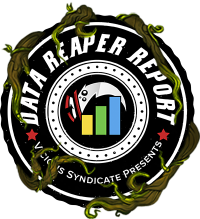
Welcome back to the Wild vS Data Reaper Report! We’re the experts from r/WildHearthstone, and we have partnered with Vicious Syndicate to create the Wild Data Reaper Report. We will be contributing the write-ups and analysis for the report, backed up by the statistics that Vicious Syndicate has become famous for. The data presented in this article is based on 60,000 games.
How fitting that our 13th monthly Wild report is being released in the spooky month of October. We are starting to see signs of stabilization in the wild meta, much sooner than we would like to see, obviously. While the meta might not be as polarized as the standard metagame, the meta hasn’t evolved much since our last report. The community has shifted to successfully limit the power of Star Aligner Druid. This being said, every class has a strong, prevalent deck in the meta.
As the meta could stagnate, there is always the worry that the amount of data that the Wild format gets, dwindles. We would like to remind everyone that these reports can be published only thanks to your contributions to the project. We encourage you to sign up to contribute your data, if you haven’t already, to ensure that the quality of the reports remains what you expect.
Quick Links
Class/Archetype Distribution | Matchup Winrates | vS Power Rankings | Meta Score | Class Analysis & Decklists | How to Contribute | Credits
Class/Archetype Distribution
[TABS_PRO id=15735]
Druid is maintaining an extremely strong presence, making up close to 20% of the meta from rank 4 to legend. This can be attributed to the overall power of a variety of decks, namely Aligner Druid which has been the target of the community as of late. Aligner Druid is accounting for approximately 12% of the field at the 4-L bracket. Togwaggle Druid and Jade Druid are the two other primary archetypes for the class, lagging behind in their playrates but are arguably just as strong, if not stronger than Aligner Druid.
Shaman has climbed to a 20% play rate from rank 4 to legend. Both Shaman and Druid compose 40% of the meta at higher levels of play. Of that 20%, over 18% can be solely attributed to the powerhouse that is Even Shaman. Most of the other Shaman decks are Shudderwock Shaman variants.
Rogue has risen in play and become the third most played class in the game. While Rogue has a good amount of archetype variety at lower ranks, once you hit rank 4, Odd Rogue makes up the large majority of Rogue decks. Kingsbane has decreased in its play rate from our last report after looking particularly weak against the field of opponents last month.
Warlock has been consistent in its prevalence from our previous report, with Reno Warlock remaining the class’ most popular and successful archetype. Zoo Warlock can be observed at low percentages, but other archetypes such as Even Warlock and Cube Warlock have all but completely disappeared from the data.
Similarly to Warlock, Mage representation is very close to what it was in our previous report. There’s been little experimentation with the class, and Aluneth Mage remains the dominant deck. With its strong matchups against Aligner Druid, Reno Warlock, and Big Priest, Aluneth Mage is an enticing aggressive deck that lines up well against popular slower strategies. The deck is held back by poor matchups against almost any board based aggressive deck in the meta.
Priest has largely stayed put. Big Priest remains the most played archetype for the class while Reno Priest has seen an uptick in play with players coming back to experiment with the deck due to its good matchup against the extremely popular Even Shaman.
Odd Paladin is the only archetype seeing significant play for its class. Paladin is still reeling from the nerf to Call to Arms, and there is little innovation being done with other strategies. In what seems like the first time in forever, Pirate Warrior has been surpassed by Control Warrior and Odd Warrior in prevalence. Many players have resorted to slower Warrior decks to help combat Aligner Druids, but not enough to pull Warrior from the lower end of the frequency charts.
Hunter has sunk in its play rates since our previous report and fallen to the bottom of the meta. Hunter is displaying a lot of variety at lower skill levels, with 5 different archetypes detectable. However, once we get to higher levels of play, the variety all but disappears, with Mech Hunter being the main significant archetype followed by Secret Hunter.
[TABS_PRO id=15736]
Meta Score
[TABS_PRO id=15738]

[TABS_PRO id=15737]
While the complaints about Aligner Druid have continued since our previous report, data shows that the meta has adjusted to the deck and has been able to deal with it relatively successfully. Aligner Druid is certainly strong, but it isn’t the most dominant force in the meta. This title is reserved to Genn and Baku, which have established themselves as the meta-defining build-around cards in a format with a significantly deeper card pool compared to standard.
Odd Rogue and Even Shaman continue to lead the pack as the two strongest decks in Wild, but the gap has closed as players have stopped overreacting to Druid and are paying more attention to these decks. Odd Paladin displays the third highest win rate, and could be considered underrated by player perception. It has a very strong matchup spread.
Jade Druid and Big Priest also find themselves in the highest tier. While Aviana/Kun decks have received more hype, Jade Druid performs significantly better against the plethora of aggressive and midrange decks in the current meta while still carrying decent matchups against late game strategies, making it the strongest Druid deck in Wild.
Tier 2 is where we find Reno Warlock, Aligner Druid, and Togwaggle Druid. Current builds of Reno Warlock are trending towards being Anti-Aggro/Anti-Combo, which decreases the success of the deck against Big Priest, Jade Druid, and Kingsbane Rogue. Aligner Druid has been the target of many strategies specifically teching to beat it, which causes the archetype’s overall win rate to stay leashed in Tier 2. Many of the techs being used to target Aligner Druid have indirectly impacted Togwaggle Druid, and the latter has also found itself in a similar position.
In this report, Tier 3 is back. Its population is composed of previously powerful archetypes that have seen the meta shift against them, or Tier 4 decks that have grown stronger for various reasons. We can find many of the decks that counter specific top meta decks such as Even Shaman, Odd Rogue, Big Priest, and Reno Warlock, but are just not as consistent against a more diverse field of opponents. Debuting in Tier 3 are Reno Priest and Odd Warrior, which are the strongest counters in the game to Even Shaman, a deck that has proven to carry very few weaknesses. Aluneth Mage has fallen to Tier 3 in the 4-L bracket due to the increased presence of Odd Rogues and Even Shamans, while both Reno Mage and Kingsbane Rogue have made significant strides in improving their builds to adjust to the current field.
Class Analysis & Decklists
Druid | Hunter | Mage | Paladin | Priest | Rogue | Shaman | Warlock | Warrior
Druid might be the most influential class in the Wild meta, with the powerful three archetypes of Aligner, Togwaggle, and Jade Druid all sitting in the upper half of the power ranking table. With so much tech directed against Star Aligner Druid, it only finds itself at Tier 2 at higher levels of play. While the deck is undoubtedly powerful, the player base has shown the capability of adapting to its presence.
Togwaggle Druid has fallen from Tier 1, and is caught in the crossfire from the relentless targeting of Aligner Druid. There is a hybrid Togwaggle/Aligner list that’s been making the rounds, originally built by SlugCat, who’s used it to hit legend on all 3 servers. The hybrid list provides flexibility of win conditions, with Dirty Rat pulling one piece never enough.
Malygos Druid has fallen almost completely out of the meta. There’s almost no reason to play Malygos Druid over Star Aligner Druid as they do about the same amount damage on average with Malygos Druid having a much slower win condition.
Jade Druid is the class’ strongest archetype currently. With better matchups across the board against aggressive and midrange decks, Jade Druid should be the deck of choice for climbing.
There has been a bit of fun experimentation too, which is always refreshing, even if it includes the same, extremely powerful core Druid cards. We’ve included a few of the newer brews in addition to the strong meta decks in case you’ve gotten a little tired of winning too much.
- Stock Aligner Druid
- H1J0’s Togwaggle Druid
- Psychmelon Malygos Druid
- Stock Jade Druid
- SlugCat’s Multi-Server Legend Togwaggle Aligner Druid
- Hylung’s Legend Even Druid
- Bexultan’s Top 10 Legend Reno Druid
Hunter has fallen in the rankings from our last Wild report, with its two most competitive archetypes – Secret Hunter and Mech Hunter – settling into the rediscovered Tier 3 across all ranks as well as 4-Legend. In addition to this, Hunter’s play rate has decreased, making it the least played class in the 4-Legend meta, even below the traditional holder of the position, Warrior. It’s not all bad news for Rexxar and Alleria, however, as quite a few players have had considerable success with various archetypes.
Secret Hunter is an aggressive midrange deck that capitalizes on Hunter’s diverse and powerful secrets with explosive cards such as Secretkeeper, Mad Scientist, Cloaked Huntress, Subject 9, and Emerald Spellstone to take control of the board in the early turns and push vital face damage. While the deck has dropped to Tier 3 since the last report across all levels of play, its highly favored matchup against the top dog of the format, Odd Rogue, suggests that there is room for the deck in the current meta. The featured list was used by Duwin to reach #10 legend.
Mech Hunter has solidified its place in the meta following the last report, where it has climbed up to Tier 3 from Tier 4 in the 4-L bracket. Its highly aggressive starts and blow-out potential allow it to punish some of the slower decks in the meta including the infamous Aligner Druid. Control recently hit #6 legend with the interesting inclusion of Mimiron’s Head.
- Duwin’s Top 10 Legend Secret Hunter
- MrDollSteak’s Secret Hunter
- Control’s Top 6 Legend Mech Hunter
- Awedragon’s Legend Mech Hunter
- Duwin’s Spell Hunter
- Jonahrah’s Egg Hunter
- Midrange Hunter
- Duwin’s Reno Hunter
Mage saw very little change since the last report, with most of the attention focused on Aluneth Mage and Reno Mage. Aluneth Mage’s power level dropped a notch, while Reno Mage has gotten stronger and jumped a tier, surprisingly.
Aluneth Mage is a very solid choice against any of the anti-control style decks, boasting very high win rates against Star Aligner Druid and Kingsbane Rogue specifically. The deck struggles severely against most other midrange or aggressive decks, making it a very polarizing aggressive deck.
Reno Mage has improved its matchup spread from the previous report. This is likely due to the N’Zoth variant seeing more play than the combo variants. The consistency against aggressive decks is needed in order for Reno Mage to stay in the meta. The deck currently has a lot of close matchups thanks to its flexibility in tech options. It carries the anti-combo tech with Dirty Rat and Deathlord, as well as tech against Reno Warlock with the inclusion of Manic Soulcaster.
Paladin, once the class with a dozen archetypes, is now a class with just one – Odd Paladin. At higher ranks, the effect is even more pronounced, but the recent return of Anyfin Paladin may or may not shake this up.
Odd Paladin’s weaker matchups are Big Priest, Reno Warlock, and Even Shaman, but it performs quite well against any other deck in the meta, including the various Druid archetypes. It’s also the hardest Odd Rogue counter in the game, which happens to be the best deck in the game. Take note.
A recent resurgence has been observed in Control Anyfin Paladin, which attacks the meta with healing, Dirty Rats, and a proactive combo win condition to provide inevitability. It’s still a rare sight on ladder, but it’s been so long since we featured an Anyfin Paladin deck that it’s still a cause for fans of the archetype to rejoice.
- Carly’s #2 Legend Asia Odd Paladin
- Alb987’s #4 Legend EU Odd Paladin
- Anyfin Paladin
- Bananaramic’s Anyfin Paladin
Big Priest holds steady in terms of popularity and strength, remaining a Tier 1 deck despite continued struggles against Combo Druids and Odd Rogue. This is, in part, due to the deck’s ability to beat up slower-developing control decks like Reno Warlock and the increasingly popular variants of Warriors lacking in aggression (both Control and Odd). Likewise, the numerous board clears gives Big Priest the ability to outlast many midrange decks, including Odd Paladin and Secret Hunter, both of which require a board to push damage. Better still, should more players catch on to the strength of Jade Druid, Big Priest will continue to have several strong matchups to feed on. Love it or hate it (maybe mostly hate it), Big Priest plays an integral role in the Wild meta.
Since the last report, Reno Priest has seen a slight increase in popularity but has proven to carry some glaring weaknesses that prevent it from being a format staple. In fact, the deck appears to be struggling against nearly every top deck in the format. Much like Big Priest, Reno Priest contains a full stack of AoE removal, but the lack of redundancy is noticeable when facing a deck with relentless board pressure like Odd Paladin or explosive openers such as Aluneth Mage and Odd Rogue. The inconsistency of these highlander Priests is noticeable in other matchups, as well, particularly against Combo Druids. A lone copy of Dirty Rat, it seems, is not a reliable enough means of disruption against these decks. The lone exception to Reno Priest’s woes is Even Shaman, which the deck performs quite well against. Fortunately for Reno Priests, Even Shaman is the most popular Wild archetype at the moment, making it a reasonable choice, especially at the 4-L bracket where Even Shaman makes up such a large percentage of the field.
Dragon Priest, now mostly centered on the Inner Fire combo, is not faring well in the current Wild landscape. The deck, even with Duskbreakers and other tools to fight for board initiative, still requires both a minion to stick and time to set up, a luxury granted by few decks in Wild at the moment. The archetype has always had a fragile game plan and simply can’t seem to compete with the swing turns other decks in the format execute. As a result, the deck remains in Tier 4 of the low sample estimates.
- Big Priest
- Annihilator’s Rank 1 Legend Dragon Reno Priest
- EK’s Dragon Reno Priest
- RenoJackson’s Inner Fire Dragon Priest
From an afterthought in Wild, Rogue has quickly become one of the most dominant classes in the game thanks to the introduction of Baku, giving the class a guaranteed mini-Fiery War Axe on turn 2 every time. Judging by this report’s data, it quickly becomes apparent that the trend that Rogue has been following since the launch of the Witchwood expansion shows no signs of slowing down. Two main decks comprise the bulk of the Rogue meta game: Odd Rogue and Kingsbane Rogue.
Odd Rogue is a highly competitive Tier 1 aggressive deck, and it’s arguably the best deck in the game. It defines the early game Wild meta and sets the pace for all other strategies to follow, keeping slower strategies in check and preventing them from engaging in an arms’ race of greed. The archetype can be rigid with regards to card versatility and leaves little room for creativity. However, players disagree on the quality and fit of Edwin Van Cleef and Myra’s Unstable Element. It is claimed that while these two legendaries can be game-winning in particular scenarios, more often than not they simply rot in hand and lose more games than they win. This topic is highly debated and while some of the more experienced players shy away from them, it remains to be seen whether they go in the best version of the deck for Wild.
Kingsbane Rogue has taken a back seat and is nowhere near as popular as its Odd counterpart. It is almost universally hated by both standard and wild players alike as one of the most polarizing decks in Hearthstone. Based on the statistics, it has made a lot of progress in its performance over the past month, but it is still a Tier 3 deck with a below average win rate. It persists in its presence on ladder as it naturally counters the majority of slower control decks.
Even Shaman continues to dominate the Wild meta as the most popular and one of the most powerful decks in the game. There are very few decks that naturally counter the Even Shaman monster, making it an extremely reliable ladder climber at all levels of play. Even Shaman has also shown the capability of adapting to counters, making a specific improvement in the matchup against Big Priest for example.
The only other viable Shaman deck in the current Wild meta is Shudderwock Shaman, and “viable” might be a cruel joke, as the deck is sitting at the bottom of Tier 4. It’s seeing more play than similarly-good (-bad) decks in the same tier, presumably because players find it fun to pilot. Antique Healbot can simulate a Reno effect with the Shudderwock combo. MtgSquirrel’s list being featured in this report is running Dirty Rats, which can result in Shudderwock removing all minions from your opponent’s hand and clearing them. Another powerful wild battlecry – Loatheb – when duplicated by Shudderwocks, can increase your opponent’s spells to a ridiculous and unplayable casting cost, sometimes as much as 35 more mana!
- Even Shaman
- oMTYLPUPxNanyxG’s Rank 2 Legend Even Shaman
- MtgSquirrel’s Top 50 Legend Shudderwock Shaman
Renolock remains the go-to Warlock archetype, with solid matchups against most of the key decks in the meta.
The flexibility of the highlander-style archetype allows it to adapt to the meta at will, with the current decklists taking a more anti-aggro approach to counter the hordes of Even Shaman and Odd Rogue that currently dominate. Given the current focus on beating aggro decks, some players are choosing to drop N’Zoth the Corruptor, in favor of more removal. However, this is a significant disadvantage in the mirror-match up. The unusual stability of the current meta has enabled stability of decklists, with few changes being observed since the early days of the Boomsday meta.
Zoolock has settled in at Tier 4, no doubt a disappointment for the many players who hoped the deck might perform well. In the lead up to the release of Boomsday, many players had high expectations for a Zoo Wild comeback. However, with horrendous win rates against the consistent early game decks of Odd Rogue and Even Shaman, as well as unfavorable matchups against Reno Warlock and Odd Paladin, Zoo Warlock has been unable to find a comfortable spot in the meta.
The familiar sound of tanking up echoes from the Warrior class, as late game Warrior strategies make a real return to the Wild format. The class has seen a slight increase in prevalence since the last report and Control Warrior is its most played archetype.
Odd Warrior has arrived onto the scene, much to the chagrin of Aluneth Mage. While crushing aggressive strategies to a pulp, Odd Warrior has trouble coping with the sheer value thrown at it by Reno decks, and with a limited suite of removal tools, you are bound to run out of them sooner or later. Odd Warrior’s inability to disrupt Togwaggle Druids or handle growing green men with the lack of Dirty Rats or Skulking Geist also make it unappealing as a ladder deck.
Azalina plays a crucial role in this regard, be it stealing the combo off of Druids after they play Psychmelon or stealing Nethers and Defiles from Renolocks. Careful resource management is the name of the game. The provided list contains Fire Plume’s Heart for an additional boost in handling the control matchups by providing a much faster win condition than Dr. Boom, Mad Genius.
DMH Control Warrior, on the other hand, has no such issues with running out of removal. You get to pick and keep all the removal you could ever need, throw out Dirty Rats for disruption and embrace fatigue as your condition. The key aspect to playing this deck is knowing when to shuffle and what to shuffle and the deck offers a lot of flexibility in this regard. The featured list packs 2 copies of Sleep with the Fishes to handle the extremely threatening early aggressive boards thrown at it. Warpath comes online in the later turns to clean up and Bring it On for burst armor gain & survivability. Scourgelord Garrosh comes in with a potent weapon which all but decimates any board aggressive decks build up. A single Skulking Geist is teched in, to handle the Jade Druids that are currently rising in prominence, and to provide utility in other matchups as well.
Pirate Warrior is still around at a modest representation, aiming to punish the greedy and slow strategies on ladder. The decklist provided has a copy of Loatheb to further cement the matchups against control decks.
Our Data Reaper Project, including the Data Reaper Live has 4,800 active contributors. Without them, this project would not be possible, so we’d like to thank all of our contributors for their help.
Preparing our weekly article requires a significant amount of time and effort from many individuals. We would like to wholeheartedly thank our current Patreons, whose generous donations help us fund computing and server costs.
vS Gold is a new membership plan aimed to support our efforts towards improving our content and data analysis while receiving some bonuses and extra features.
Contributors
Here are all the people that participated in bringing you this edition of the [Wild] vS Data Reaper Report:
















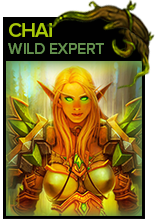
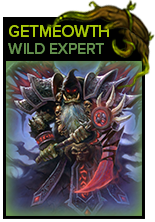
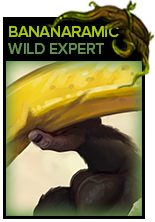
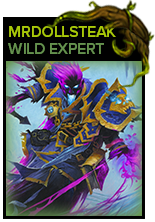
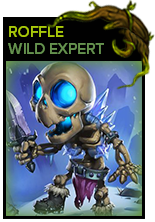
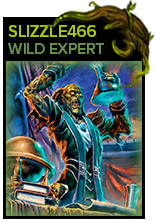
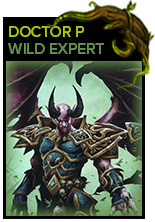
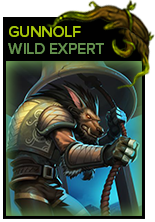
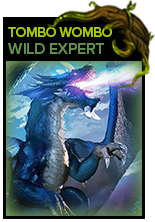



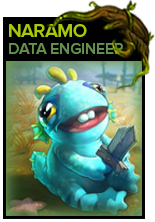

I don’t understand blizzard’s nerfes after reading this report.
Is meta polarity not a problem in wild? I find it hard to believe everything is “fine”right now.
When a player auto concedes to a turn 3-4 barnes or psychmelon, or control auto concedes to a turn 1 kinsbane. I hardly find that balanced, nor fun and interactive.
Not to mention Gen and Baku warping aggro around it.